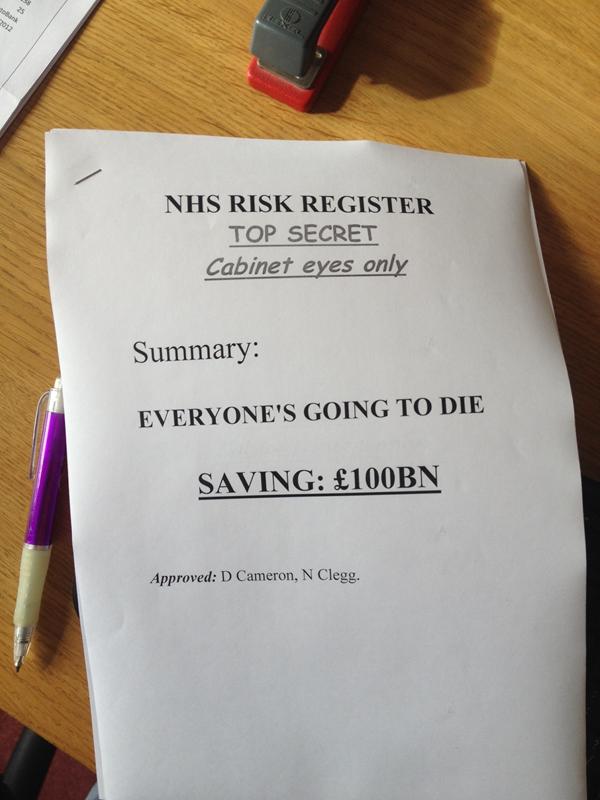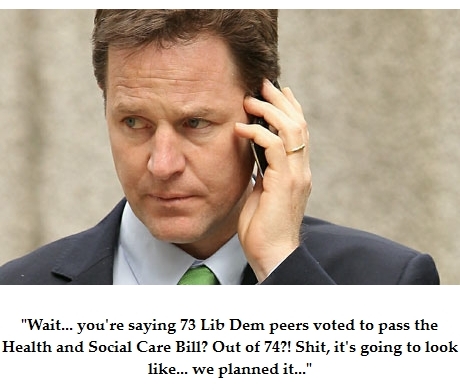 I haven’t been to the cinema in at least five years. Having small children and a wife who works evenings has made me something of a babysitter by default. I have however seen the first few Alien films, including the first many times over, and with an unusual opportunity to take myself out I decided last night to go and see Prometheus. The following review contains spoilers, although it will probably become clear that there isn’t actually that much to spoil.
I haven’t been to the cinema in at least five years. Having small children and a wife who works evenings has made me something of a babysitter by default. I have however seen the first few Alien films, including the first many times over, and with an unusual opportunity to take myself out I decided last night to go and see Prometheus. The following review contains spoilers, although it will probably become clear that there isn’t actually that much to spoil.
The film opens with a giant ship flying over a stunning Earth-like landscape – great lakes, mountains, hills. A figure in a robe straight out of The Name of the Rose appears at the top of a waterfall. Removing the robe he reveals himself as a super-muscly albino humanoid, like a pumped-up Silas from the Da Vinci Code. Super-Silas takes what appears to be a nuclear pomegranate from his pocket and eats it. Then, as is usually the case after eating dodgy fruit, he becomes very ill, collapses and tumbles down the waterfall.
Cut, as you do, to the Isle of Skye in 2089, and geologists discovering cave paintings of muscled giants pointing to objects in the sky, which match other paintings they’ve found elsewhere in the world. One of the scientists is Noomi Rapace, a Swedish actress I’ve never seen before because I never go to the cinema. Fast-forward a couple of years and she’s in stasis on board Prometheus, a ship sent out into the far reaches of space by mad trillionaires the Weyland Corporation to find the planet responsible for inspiring the cave paintings.
Standing over Rapace is Michael Fassbender, looking confusingly even more like a Nazi than he did in Inglourious Basterds. With his bolt-upright posture, charming uniform and perfect blonde hair he is obviously a robot, as many Nazis were. Nazibot watches Rapace’s dreams, which are very dull. Then he plays a bit of basketball on a bicycle, learns a language and watches Lawrence of Arabia, just in time for tea.
The ship looks hideously expensive and slick. Classical music plays. The film seems to want to be 2001, but is too boring already. Something’s got to happen soon.
Thankfully something does. The ship wakes everyone up because it’s nearly reached its destination. Rapace and the rest of the crew come out of stasis and all throw up, apparently a “perfectly normal reaction” to being asleep for two years, according to Nazibot. The scene is hardly necessary even if only because the crew would be unlikely to have much in their stomachs after such an epic snooze, but more so because it’s pointless. If the vomiting had turned out to be an important plot detail it might be justified, but, reader, I watched the whole film and it didn’t.
Indeed, the language of the film is very different to Ridley Scott’s original masterpiece, Alien. In that film John Hurt woke up from a similar stasis and simply rubbed his neck. It is a measure of the actor’s skills and the confidence of the director that Hurt simply looked like a man who’d been asleep for a long time. Not only was there no vomiting, there was no dialogue. If Prometheus says anything about cinema’s evolution over the past three decades it’s that these days you can’t be trusted to work out for yourself that you’re going to feel a bit rough after being asleep for two years, and now have to have a robot explain it to you.
So anyway the crew are assembled to be told their mission on this planet the ship is arriving at, which is something to do with Rapace’s theory that humans are descended from the local inhabitants. I can’t really remember the details as I was busy trying not to listen to Rafe Spall’s and Idris Elba’s chronic American accents, the worst this side of Alpha Centauri, or wherever it is they were. With the 17-strong crew also comprising a Scottish woman, an Irish bloke and an English geologist (this is starting to sound like the setup for a dodgy joke), why on earth have two decent British actors try to sound American? Even Nazibot speaks with the sharpest of clipped British accents (sounding more terrifying as a result). But then I suppose he can be programmed to do that.
Having been briefed by a virtual, now-dead Marlon Weyland (Marlon may not be his real name, I just made it up because it sounded good), and punky geologist Sean Harris having argued with the dreamy Rapace about the whole point of even being there in the first place (CONFLICT), the on-board corporeal Weyland representative in the statuesque form of Charlize Theron starts giving everyone a hard time. Looking even more like a Nazi robot than Fassbender, unlike the others she was doing press-ups straight out of stasis rather than throwing up and now tells Rapace and her scientist BF Logan Marshall-Green that they can’t basically do anything interesting at all. More CONFLICT.
Inevitably they all end up on the planet exploring a cave and don’t have any weapons with them because Rapace has said this is an exploratory mission. This sequence contained my favourite bit of the film, as Sean “marked for death” Harris sends some nifty electronic grapefruit flying through the caves to digitally map them, forming back on the ship a 3D representation of every detail of their environment. The team, for reasons of pace, having thus saved themselves about six weeks of geologising, then uncover a decapitated body and a tomb with a giant Easter Island-type head in it, Nazibot showing suspicious abilities to open locked alien doors. Then they find lots of pods, which seasoned Alien viewers will recognise as being VERY DANGEROUS. A storm comes in and they have to race back to the ship, Nazibot stopping to secrete something gooey from one of the pods about his robot-person, and Spall and Harris getting left behind.
Finally on the ship, Rapace and the Scottish scientist examine the head of the decapitated corpse, which has the same features as Super-Silas from the opening sequence. They sterilise it, a message flashing up on a computer screen saying something like “Sterilised and decontaminated, safe to examine”. “Sterilised and decontaminated and safe to examine,” repeats the Scottish scientist, as if I’m deaf or just stupid. It’s like those people who read the words off the Powerpoint presentation they’re showing you. YES I CAN READ, THANKS. They then try to resurrect the head and accidentally blow it up, although not before establishing that its DNA matches ours. So we’re all in it together.
Meanwhile Nazibot examines what appears to be a pickled cucumber from his stolen pod and, during a very dull conversation with Marshall-Green, secretes a bit of the cucumber in his glass of champagne. M-G then gets randy and enjoys close encounters with Rapace, who economically in the same scene we are told can’t have children. Back in the cave, the two errant crew members, who have been told “ironically” by Elba “try not to bugger each other” (the worst line in a film of shit lines), are “ironically” savaged by a phallic reptile. I really like Rafe Spall as an actor but I must say that his accent was so dire that I breathed a sigh of relief when the eel-like creature shot down his throat and shut him up.
Despite all of this action it still felt like the film was going nowhere. It was probably about 45 minutes in by now and apart from anything else I was half-deaf from the Cineworld volume. There seemed to be bass speakers actually in my seat, so anytime anything dramatic happened I was practically vibrated out of it onto the floor. This wasn’t cinema, it was a fairground ride on a plane experiencing turbulence, with a thrash metal band thrown in for good measure.
Next thing I know the crew are exploring the cave again, Nazibot discovering an H.R. Geiger room with a cool 3D planetarium projection thing and a Super-Silas in suspended animation. Sadly though they have to cut their trip short again as Marshall-Green is feeling rancid. Theron, fearing contamination, won’t let him on the ship (typical elf’n’safety Nazi), and brandishes a flame-thrower at him stolen from the first Alien movie. M-G volunteers to be incinerated, which goes to show you should never accept drinks in poncey glasses from Nazi robots. Rapace also feels rough and upon examination turns out to be three months’ pregnant, only a few hours after intercourse! “It’s a miracle,” she doesn’t say, fingering the cross around her dreamy conflicted-scientist’s neck. Nazibot doesn’t let her see the scan of the foetus and gives her a shot of valium, so we know she’s gestating an alien, but she manages to escape and program a nasty-looking robot operating table to perform a caesarean. The scene is as farcical as it is disgusting, the robot lasering the flesh, removing the thrashing squid-like foetus and stapling the wound up again, all while Rapace is wide awake. It is actually a shame that it is either disgusting or farcical, because it should be terrifying – the whole film should be terrifying, as the first Alien film was (within infinitely less gore, CGI or budget). Obviously there have been several other films in the series, none of which matched the first in almost any respect (although I do love the second one, Aliens, for Sigourney Weaver’s performance), but I draw the comparison because of Scott’s involvement. I couldn’t actually believe the two films were by the same director, especially when Rapace then manages to run down lots of corridors mere minutes after major abdominal surgery. I suppose it’s the adrenaline.
Rapace fetches up in a room in which the ancient and supposedly dead Marlon Weyland (I still don’t know his first name and don’t really care) turns out to be ancient and ALIVE, albeit evidently played by some much younger actor behind acres of prosthetics, because you know these days you just can’t get really old actors, or maybe you can but they only act in films that are any good. Weyland has been secretly part of the mission the whole time in a quest to make contact with the aliens that apparently created humans so he can find the secret of eternal life. Cynics would draw a comparison here with the 75-year-old Ridley Scott interrogating his 1979 masterpiece for the secret of making great films, but I’m not jumping on that bandwagon.
So, if you’re still with me, what’s left of the crew and Weyland go down to the caves AGAIN and resurrect Super-Silas, who doesn’t throw up despite having been asleep for thousands of years, proving what an amazingly advanced race he comes from. Nazibot, who speaks every language in the universe, says something to him in Swahili, or at least it sounds like it, the alien’s response to which is to rip Nazibot’s head off and beat the crap out of everyone else. Weyland dies, which is actually disappointing in more ways than one. I mean you go all that way to discover the origins of humanity, you don’t find anything that makes any sense whatever and then you’re beaten up by a massive albino. By the end of the movie you’re more or less feeling the same way yourself. (I’ll say one thing though, from certain angles in this scene Super-Silas looks very much like Blake’s painting of Isaac Newton, which is a nice touch.)
So it turns out that the Super-Silases aka Albino Newtons created us and then wanted to destroy us, for no obvious reason except that we make a lot of shit films. Super-Silas then flies the cave, which has actually been a ship all along or something, out of the ground, apparently destined for Earth to put Ridley Scott out of his misery. Over her radio Rapace tells Elba and his co-pilots back on Prometheus that they have to stop the ship “or there’ll be no home for us to go back to!” On the strength of this weedy plea, Elba and his team – more or less grunts who have barely been involved in any major discussions about the mission – immediately volunteer for a suicide mission to crash Prometheus into the alien ship. Theron manages to escape in a flying pod, only to get crushed by falling debris. Rapace survives, but finds her only companion now is the disembodied head of Nazibot, chatting to her from the floor of the Geiger room while she scrambles to safety in a jettisoned section of Prometheus. Rapace, seemingly in the clear, staggers towards the operating theatre where she had earlier left the tennis-ball-sized creature extracted from her abdomen to find the room now occupied by a giant squid. “Can you hear me?” comes the calm voice of Nazibot over her earpiece. “You have to get out of there.” BECAUSE WE HAVE TO BE TOLD THIS BECAUSE WE ARE ALL STUPID. Super-Silas, who has managed to survive the Prometheus crash (what a guy!), reappears and struggles with both Rapace and the squid, which luckily shoves a tentacle down his throat, leaving her to escape with Nazibot’s head in a bag. As she flies away in another ship handily left lying around, the familiar shape of the original alien we know and love emerges disgustingly from Super-Silas. So the future is uncertain, but appears to involve a sequel.
Overall I’d give the film 5/10, mostly for the flying grapefruit. As it’s basically well made and beautifully designed and shot, it’s like Dr Johnson said, worth seeing, but not worth going to see.


 I haven’t been to the cinema in at least five years. Having small children and a wife who works evenings has made me something of a babysitter by default. I have however seen the first few Alien films, including
I haven’t been to the cinema in at least five years. Having small children and a wife who works evenings has made me something of a babysitter by default. I have however seen the first few Alien films, including  The following is the text of a letter I sent to the Guardian following the enactment of the new EU cookie law on 26th May. The Grauniad didn’t publish it and I meant to post the text anyway but had an extra prompt today from an article reporting that, a couple of weeks later,
The following is the text of a letter I sent to the Guardian following the enactment of the new EU cookie law on 26th May. The Grauniad didn’t publish it and I meant to post the text anyway but had an extra prompt today from an article reporting that, a couple of weeks later, 

